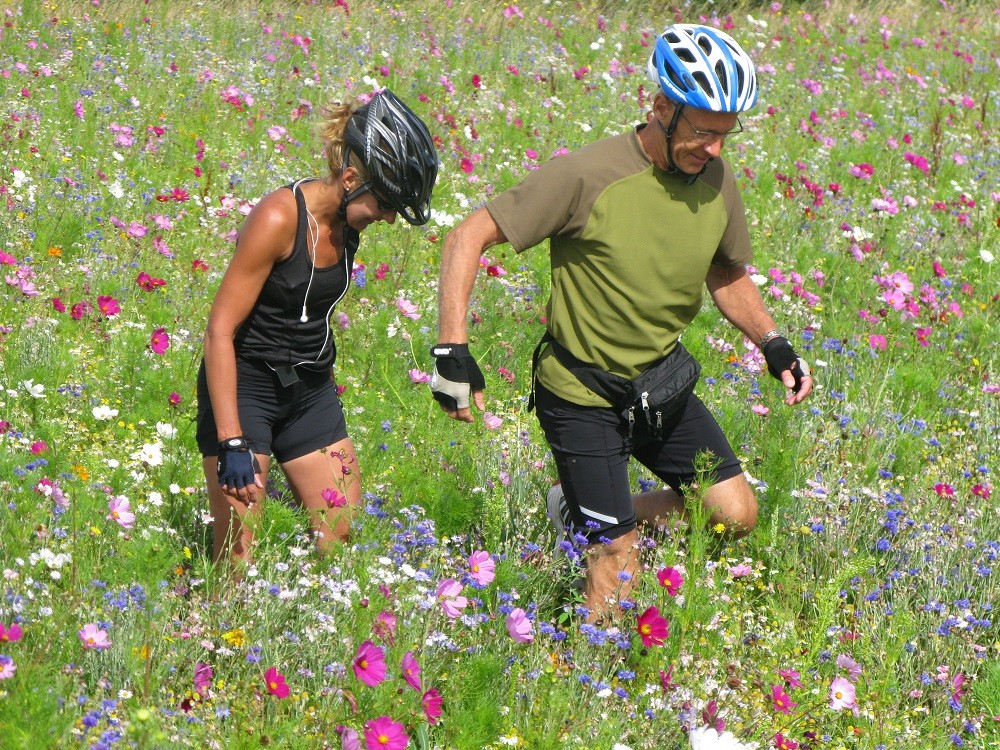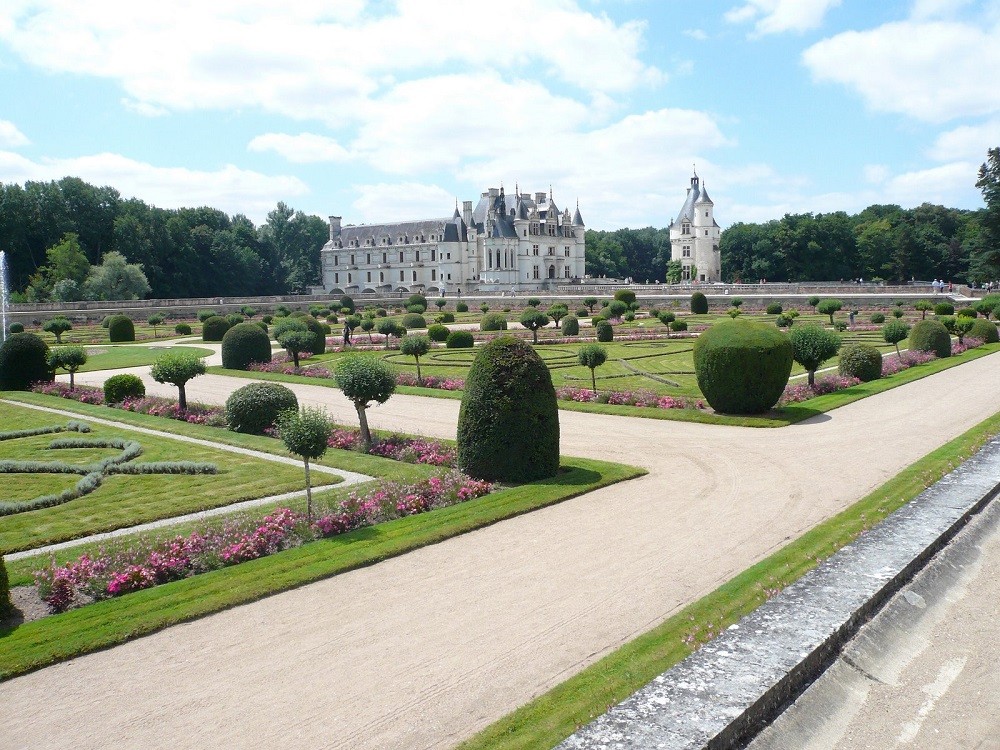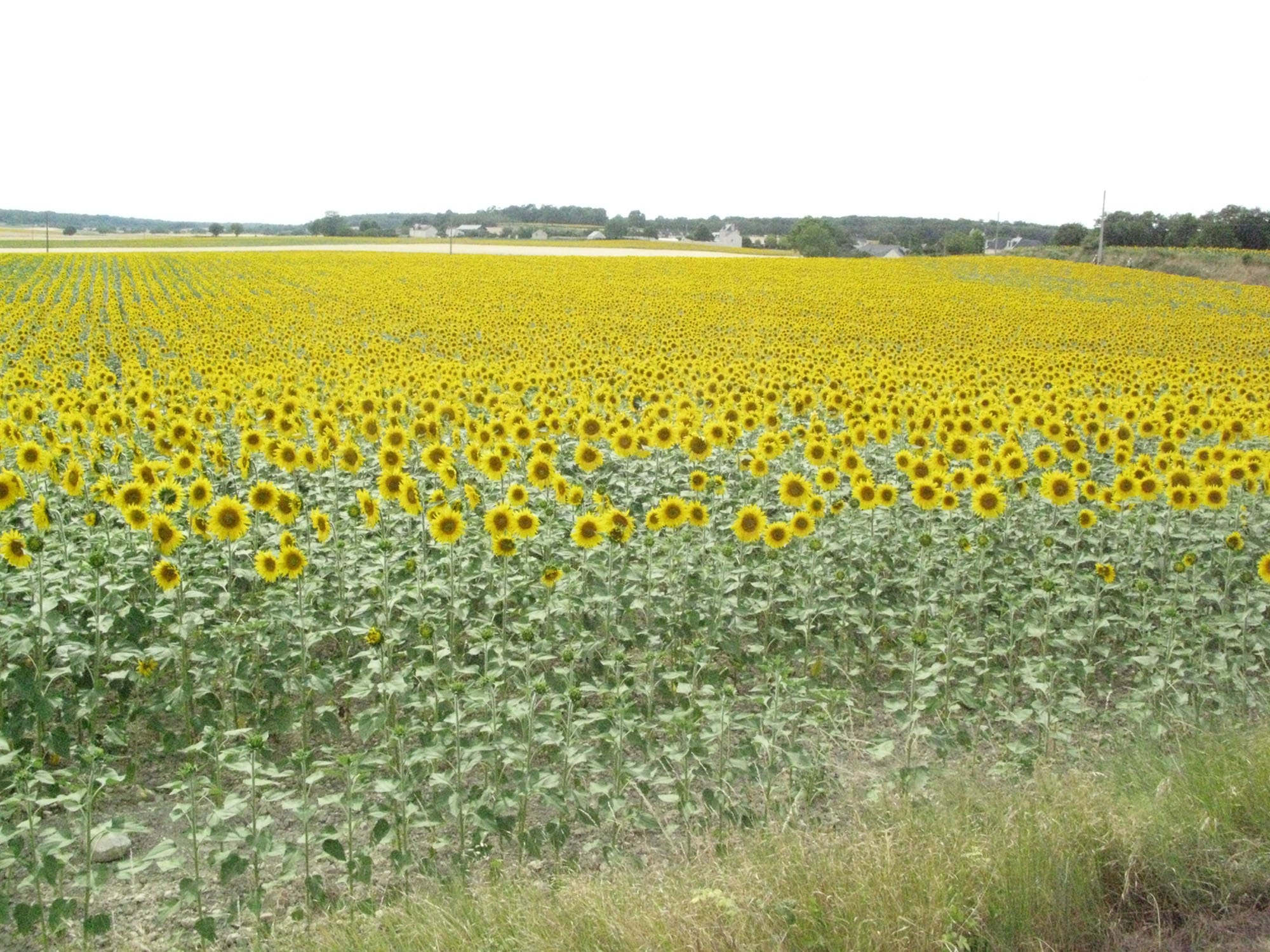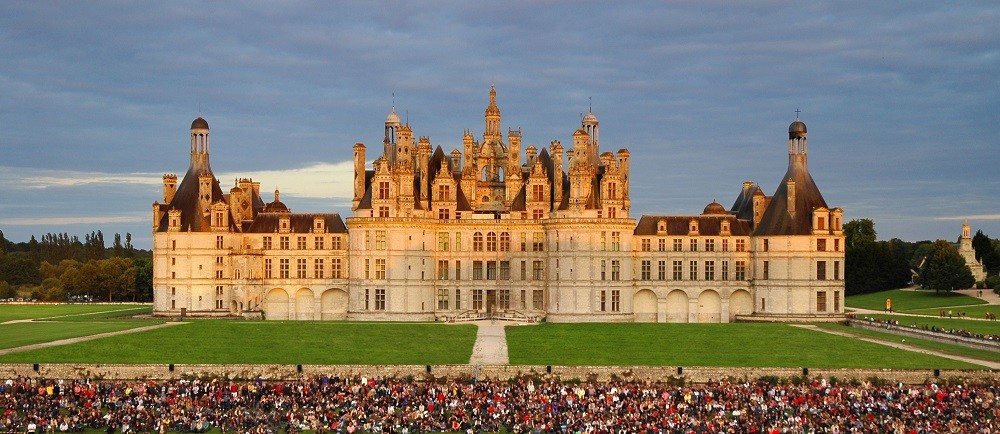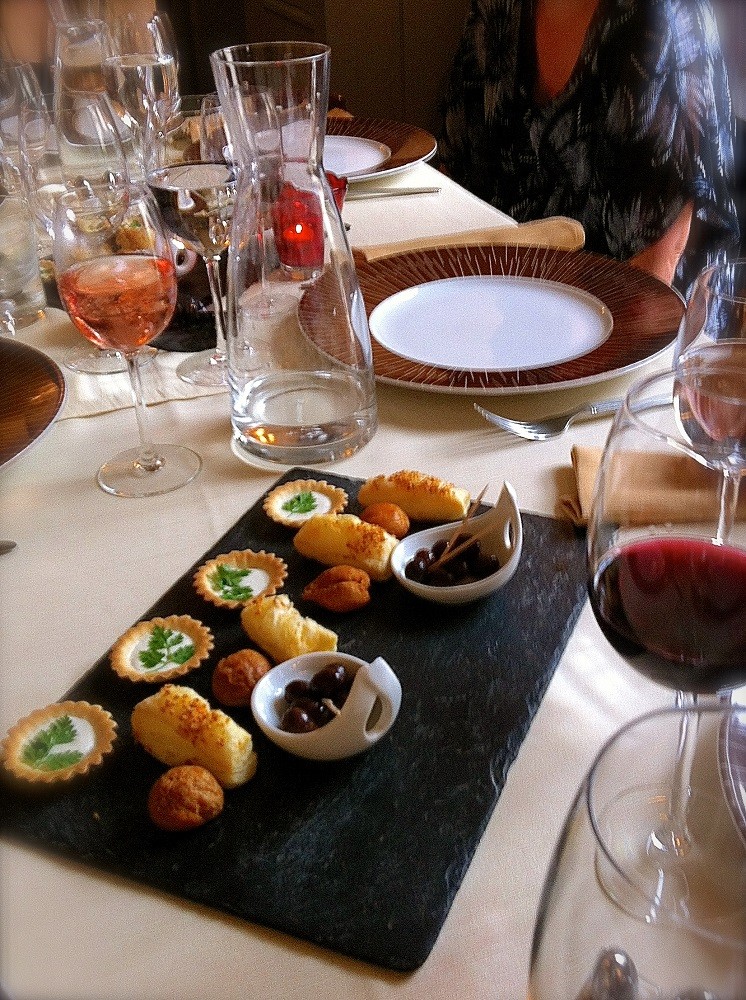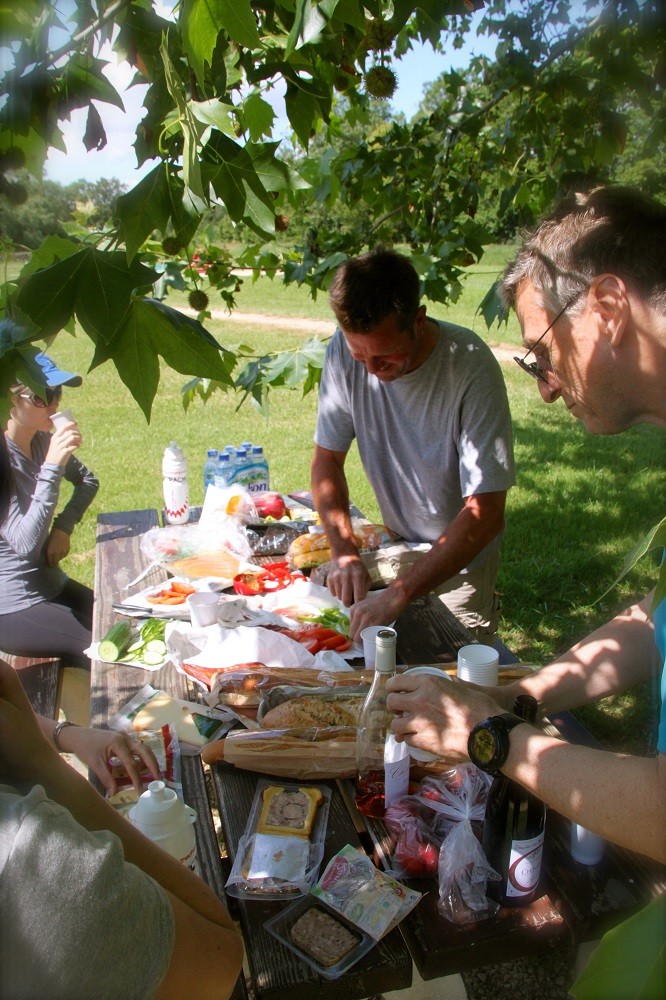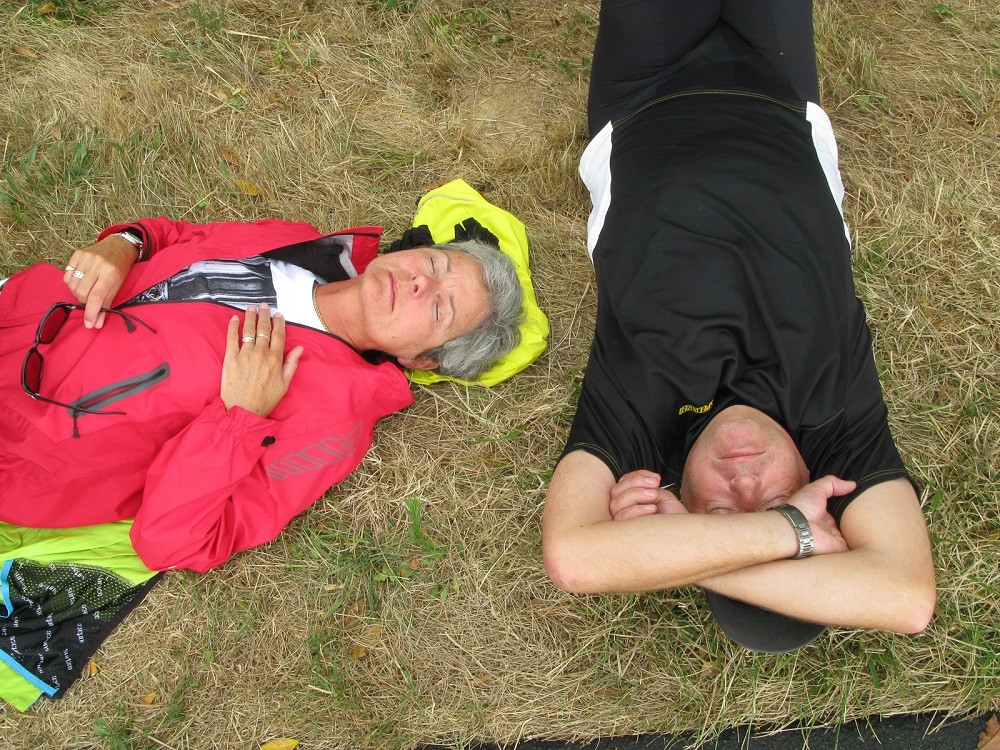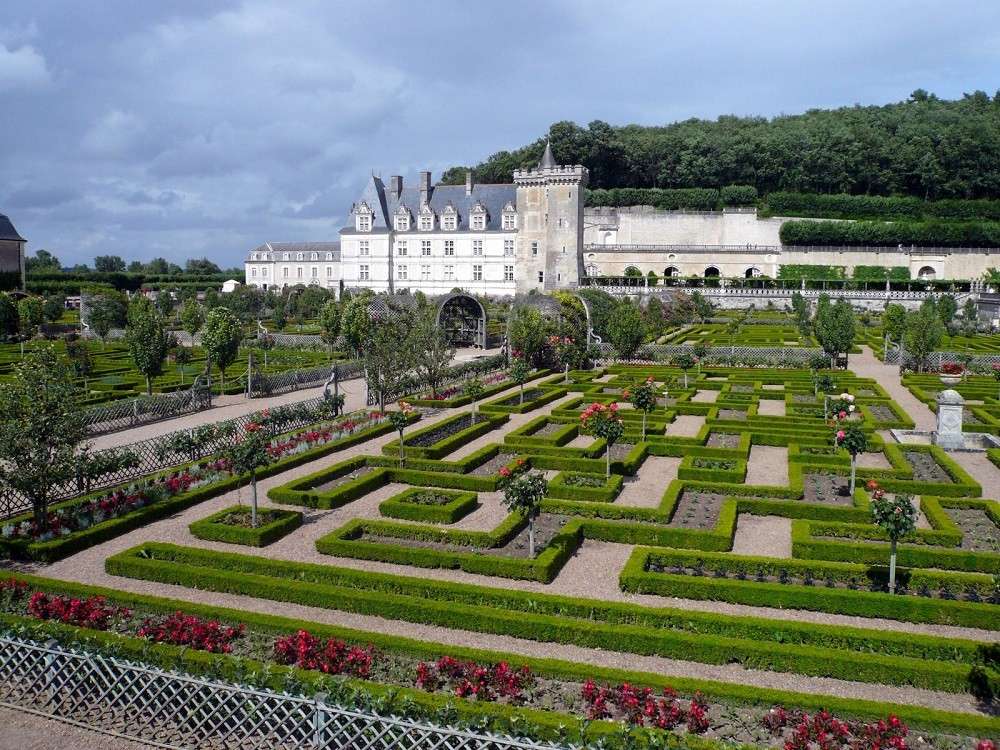What to expect
Between the 13th and the 16th Centuries, French royalty built an amazing collection of beautiful renaissance chateaux.
On the Loire Valley cycling tour we visit Chateau Chambord, the largest of the Loire chateaux, built by Francois I as a hunting lodge and containing a spectacular staircase by Leonardo Da Vinci. We visit Chenonceau, once the home of Henry II's mistress, Diane of Poitiers, evicted by his widow, Catherine de Medici, who then went on to build the iconic ballroom across the River Cher.
The Chateaux are stunning, and we’ve put together a great itinerary of visits. But of course we’ve got great food, interesting wines, and the path less trodden.
FROM
- Single Room Supplement: +£380
- Join in London +£425
- Join in Paris +£170
- Transfer from Train Station: +£75
- Airport Transfer: +£200
- Self-Drive +£90
- Available Dates 2024:
June 15-22, July 13-20, August 10-17

ITINERARY
Day 1 The Garden of France and The Valley of Kings
We arrive at our hotel in Montreuil Bellay in the late afternoon. We stay at the Relais du Bellay, complete with health spa and pool for those with enough energy to indulge.
Montreuil Bellay boasts a beautiful chateau and Abbey of its own, and is a thriving little market town.
Day 2 A Spectacular Underground Château, and Some Pretty Nice Vineyards
Between Montreuil Bellay and our first sight of the Loire lies the vineyard of Saumur-Champigny, rated by many as the finest red wines of the Loire Valley.
Our first stop is at Château Brézé, a wine-making estate, but most famous for its amazing underground château. Dating back to the 7th century, these troglodyte homes and villages are a feature of this area. The limestone is so easily worked that it was easier to carve out a new bedroom than to build one!
One of the reasons behind the underground Château at Brézé was to avoid the attention of invaders, such as vikings, and the whole château is geared toward defence, including the deepest dry moat in Europe. There are fascinating defensive structures here, but most interestingly, it was never attacked, let alone defeated. All that effort over more than 1,000 years, and nobody ever attacked it.
If time permits we can also stop for a wine tasting with the Comte de Colbert, still resident at the château. Afterwards we make our way to the Royal Abbey at Fontevraud. This huge Abbey was traditionally the home of many French Queens, but is most famous as the resting place of Henry II, his wife Eleanor of Aquitaine and their son Richard the Lionheart. King John I’s wife, Isabelle of Angouleme, also lies with them, but is a bit less famous.
Today we can choose to pass through Montsoreau where the Vienne flows into the Loire. The Loire is very wide here, and Montsoreau looks beautiful stretching along the south bank. We end the day in Chinon. To my mind Chinon boasts one of the only 'true' château in the Loire - i.e. it was English, and it's ruined.
In the 12th Century Chinon was effectively the English capital as successive Kings made their home in the château. It is much older than most Loire château, and its military purpose is obvious from its commanding position along the ridge that overlooks the medieval town of Chinon. We stay at the Hotel de France overlooking the beautiful Place du Général de Gaulle where you can relax in any of the many pavement bars and cafes.
Day 3 Sleeping Beauty Woz 'Ere
Today is fairly light cycling as we have a lot of château-action to fit in. We can start with a tour of the castle of Chinon. As well as home to English Kings, the castle contains the tower where Joan of Arc ‘heard the voices’ telling her she would be granted an army to relieve the siege of Orléans.
We leave the Vienne and continue our cycling tour back towards the Indre and the Loire.
Overlooking the Indre is the first of the big-league château, Château Ussé, the inspiration for Charles Perrault’s Sleeping Beauty.
Next on our hit-list is Villandry, an unexceptional château, but with gardens that Michelin rate as a 3*** attraction - 'worth a journey in their own right'. There are three gardens - a vegetable garden, a flower garden and a water garden.
Each year the gardening team choose a theme and tell a story in flowers. Villandry is really something, and not to be missed.
Finally today on our cycling holiday we will travel the 11 km or so to Azay-le-Rideau, another member of the Premier League of Loire Châteaux. Azay-le-Rideau is surrounded on three sides by the River Indre, which has been carefully landscaped to provide a beautiful reflective setting for this ornate château.
There was no military purpose to Azay-le-Rideau, it was just designed to be beautiful, and it is.
Tonight we stay at the Hotel des Chateaux, on the outskirts of Azay-le-Rideau from where is a short stroll down into the town for perhaps our finest dinner of the week.
Day 4 A Tale of two Châteaux
We start the day with a visit to the purely decorative château of Azay-le-Rideau on the river Indre, and boy is it decorative, and finish in the medieval Cité Royale of Loches, on the Indre, where sits the Donjon of Loches. A donjon is a fortress and this place is very obviously built for function rather than form.
In between we cycle over the beautiful rolling farmland of the river Indre, acclaimed as the most beautiful landscape of all the rivers of the Loire Valley.
Depending on timing and inclination, we may be able to visit the Donjon in Loches on our arrival in town, or, if you prefer, a stroll around the royal residence, home of many French Kings, not to mention their wives and mistresses. There will also be more opportunity for these visits tomorrow morning as both are just a stroll (okay, a steep stroll) away from tonight’s hotel, the George Sands.
Day 5 Chateau Chenonceau - Home of Louise The Inconsolable, Among Others
Before leaving Loches, we will attempt to fill any gaps left in your knowledge of its medieval royal buildings (possibly caused by indulging in an extra beer or two on the delightful terrace of the Georges Sands yesterday afternoon.) after which we will head back across country to the most visited of all Loire Châteaux, Chenonceau.
Built as a bridge over the Cher and surrounded by ornamental gardens and man-made moats, this château manages to live up to the usual French hyperbole of its website. It truly is unforgettable.
Most of the rooms are open, and this is a chance to see original floors, tapestries and furniture. In general French Châteaux don't have all the furnishings and interior detail that we often see in British castles. Chenonceau is a pleasant exception, and Louise of Lorraine's room, painted entirely in black with silver motifs of tears and crowns of thorns to mourn her dead husband, is especially memorable.
The ballroom, built by Catherine de Medici, spans the Cher in spectacular fashion, and although the Château had no military value it took on a gloomy historical role in the 20th century. First, it served as an army hospital in the First World War. Then, In the Second World War, the Cher was the boundary between Nazi-occupied France and Vichy France. Château Chenonceau was a border post, each end of the ballroom opening into a different country.
Our hotel tonight is the Hotel Bellevue in Montrichard, a few kilometres upstream from Chenonceau, overlooking the Cher.
Day 6 Chateau Chambord - The Highlight of the Week
A short ride beyond Montrichard, on Thursday morning, are the fascinating mushroom caves of Bourré, where they grow Blue Foot, Shitake, Oyster and Paris mushrooms.
Mushroom mycelia need a stimulus to prompt growth - European mushrooms tend to need a light or heat stimulus, but the shitake mushroom from Japan grows naturally on trees and responds to earth tremors common in that neck of the woods. Earthquakes are simulated in the caves using the state-of-the-art device of slapping the bin-liner that contains the mushroom compost. Result? Lots of 'shrooms. It's true, honest!
Bring something warm for a visit of around an hour underground. As well as mushrooms, there are a few spectacular galleries where you can see fantastic sculptures of local village scenes through the ages carved from solid rock. If you’ve never seen a sheet of paper carved in limestone before, complete with curled up corners and the heads of the nails pinning it to a wooden notice board (also carved in limestone, complete with wood grain), then you’re in for a treat.
The end of today is my favourite part of the whole week, the enormous Château Chambord. This is by far the largest of all the Loire château and was originally built by Francois 1 as a hunting lodge. It lies inside a huge park contained by the longest wall in Europe, all 32 km of it. The château itself contains a famous double-helix staircase designed by Leonardo da Vinci, where two people can ascend or descend at the same time without meeting.
Our hotel tonight is the Hotel St Florent, 10km further on from the château in Mont-pres-Chambord.
Day 7 Downstream Must Mean Downhill - Right?
Well, sadly, nobody explained this to whoever designed the route of the Loire cycle path into Amboise with the result that one or two lumpy climbs feature in an otherwise easy ride into Amboise.
However, before that, we will visit and taste the wines at Vignoble Tevenot, a very traditional family winemaker in Cellettes, just on the edge of the enormous forests that surround Chambord.
The final destination of our tour is Amboise, where the setting of the château overlooking the Loire is one of the most used images of the Loire valley.
The town has a medieval centre, largely pedestrianised and full of bustle. There are a number of bars and cafes sitting directly beneath the huge château walls, and I reckon we've usually earned a sit-down and a glass of the local Touraine or Vouvray.
For anyone who hasn't visited Leonardo's place at the Clos-Lucé, it's well worth it. Many of the original furnishings are still in place, including the great man's bed, and there is a permanent exhibition of his inventions and writings including several exquisite scale models. Leonardo invented wings that didn't work, helicopters that didn't work and airplanes that didn't work. To be honest, they're nothing special, but he did so much more than we generally associate with him. There are touching examples of his philosophy, and wonderful models of inventions that did work, like an ingenious water pump. Definitely worth visiting.
Tonight we are staying at the Hotel Vinci and we eat at the Lion d’Or.
Day 8 All Over
The most civilised finish to any of our tours. We're only 30 minutes from the TGV station at St Pierre des Corps, and a gentle departure time of 10.30 am gets us back into Paris for late morning, for travel to London and places onward.
JOINING DETAILS
Please take careful note of the train times. Our transfers are scheduled to meet these designated trains; if these train times are inconvenient, please contact us so that we can be sure of arranging appropriate transfers.
GUIDED TOUR
SELF-GUIDED TOUR
Quick links

